Ehren Kee Natay works in the rhythm of creation
Ehren Kee Natay has been a drummer for 20 years and refers to rhythm and percussion as his “principle art form.” But at age 23 he began to shift his focus more towards visual and traditional arts.
He studied silver smithing and began making jewelry, a traditional Navajo craft. This led him to the Native arts scene in Santa Fe, and from that point he expanded into three-dimensional expression.
“I had always worked in all mediums but I never really delved into the technical aspects of creating and constructing and fabricating,” Natay explains. “Jewelry really opened me up and made me realize I could apply music, three-dimensional sculpture and jewelry into imagery and interactive and performance art.”
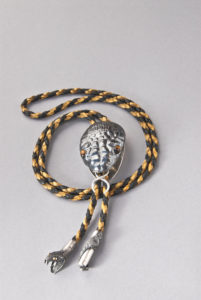 Rulan Tangen, the founder and director of Dancing Earth Dance Company, discovered him and “made a dancer” out of him. After touring with the company for three years, doing youth and community outreach at different reservations, Natay became focused on sharing knowledge and educating and working with youth.
Rulan Tangen, the founder and director of Dancing Earth Dance Company, discovered him and “made a dancer” out of him. After touring with the company for three years, doing youth and community outreach at different reservations, Natay became focused on sharing knowledge and educating and working with youth.
“Now that’s pretty much what my life is like,” he says. “Mostly I’m an arts educator, but my livelihood and where my drive and my passion are is through creating. I don’t look at myself as an artist but as a creator. In being creative and intuitive, a lot of it is just listening to what needs to come into the world. What does the rest of the world need to learn from my experience?”
While Natay has worked in a variety of mediums ranging from music and movement to sculpture and smithing, he has also been a muralist, having worked on commissioned pieces for commercial projects like Nativo Lodge in Albuquerque as well as his latest, a mural to raise awareness for the Cystic Fibrosis Foundation on behalf of a close friend whose daughter has CF.
“With Nativo I was trying to express myself and my experience as coming from third-generation assimilation,” he explains. “My [Navajo] grandfather went through the boarding school assimilation process. It’s well documented. We know the crimes that were committed against him in order for him to be a part of American society.”
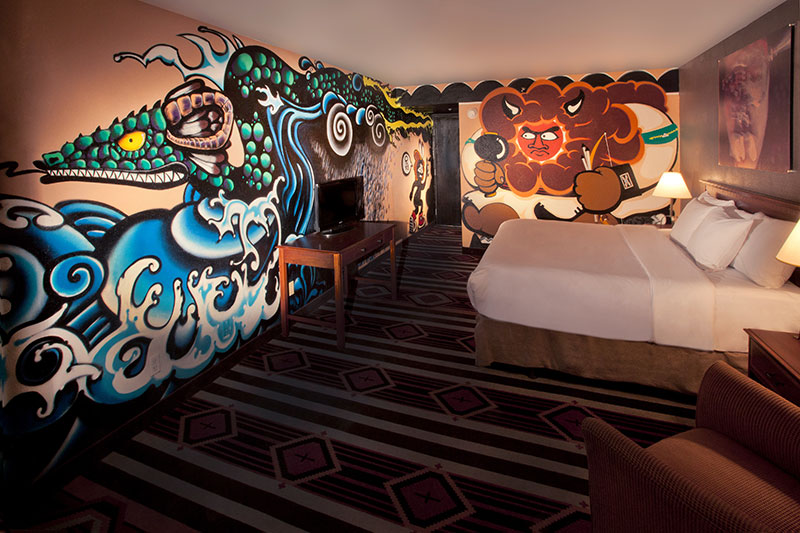
He says he wanted to tell that story because it’s the story that he lives as being half Kewa (Santo Domingo Pueblo) and Diné (Navajo) on his father’s side and half Anglo-Saxon (German and Irish heritage) on his mother’s side. He wanted to tell that story, he says, because, “I don’t think it’s too far off from happening again.”
Natay walks in both worlds all the time – the world of the Native American and the world of the white man.
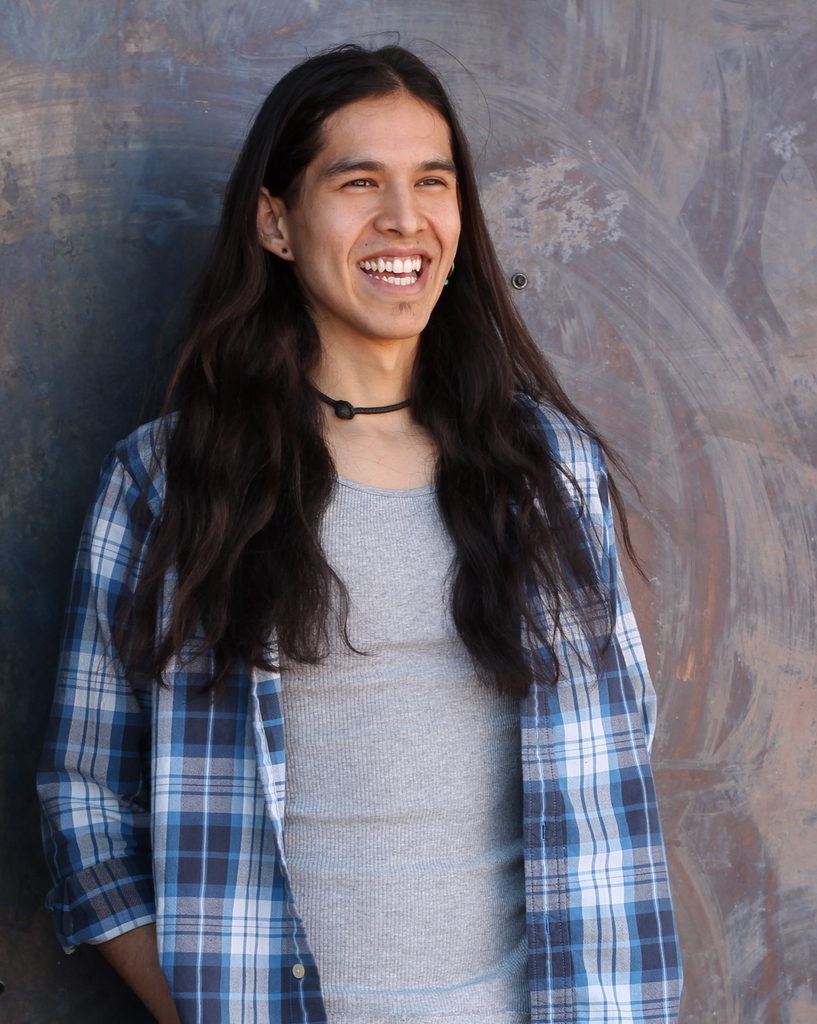
“I can’t not walk in both worlds; it’s kind of an obligation,” he says. “Because of the way I look, because of the way I am, because of the responsibility I feel like have, I feel like it would be easy to just be one or the other, that it would be a little more sure. There is a lot of questioning of self that comes from being half this and half that.”
Despite this feeling of straddling two different worlds – and, by extension, two different cultural identities – Natay makes it a point to say that he is no different than anyone else.
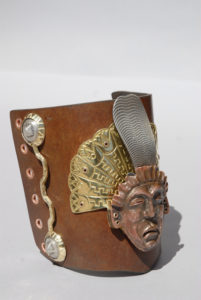 “I don’t feel like I’m any more special or any different when I examine myself,” he says. “But through other people’s perspectives, they do sometimes think that there is something different happening there, or another angle [I hadn’t intended]. In painting this most recent mural, the design is someone else’s work. I just designed the layout. It’s a big fairy with big butterfly wings holding roses with the Cystic Fibrosis Foundation logo in the background in a child’s mosaic fashion. To me, I see it as a fairy tale, but when we were painting it we had people asking, ‘Is this a Native American design? Do these represent the pueblos?’ We keep getting this reference to our work being Native, and we’re not even trying to put that in there at all but it’s unavoidable. Our experience is such a unique experience, whether we want it to show in our art or not it finds its way in there.”
“I don’t feel like I’m any more special or any different when I examine myself,” he says. “But through other people’s perspectives, they do sometimes think that there is something different happening there, or another angle [I hadn’t intended]. In painting this most recent mural, the design is someone else’s work. I just designed the layout. It’s a big fairy with big butterfly wings holding roses with the Cystic Fibrosis Foundation logo in the background in a child’s mosaic fashion. To me, I see it as a fairy tale, but when we were painting it we had people asking, ‘Is this a Native American design? Do these represent the pueblos?’ We keep getting this reference to our work being Native, and we’re not even trying to put that in there at all but it’s unavoidable. Our experience is such a unique experience, whether we want it to show in our art or not it finds its way in there.”
Natay has won awards from the Museum of Indian Arts and Culture Native Treasures Fine Art Show, the Wheelwright Museum of the American Indian, the Artist Designed Collection Fellowship at the Southwest Association for Indian Arts (SWAIA), and the Rollin and Mary Ella King Fellowship at the School for Advanced Research.
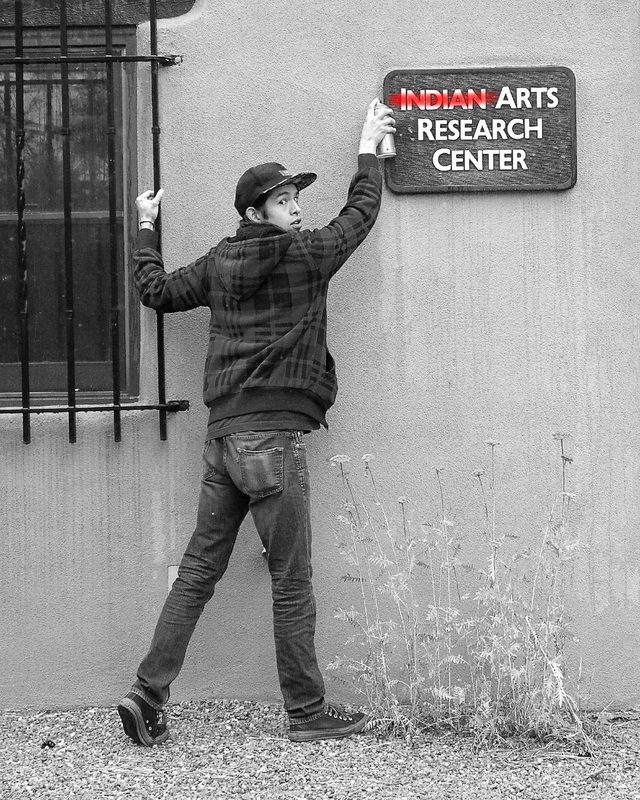
The School for Advanced Research (SAR) has a division called the Indian Arts Research Center (IARC). One provocative piece that Natay has created is a photograph of him in front of a sign at the IARC building using spray paint to cross out the word “Indian.” This was actually his self-portrait for his fellowship at SAR.
“It was supposed to be a little bit of a slap on the wrist for the institution,” he says. “They’re all about being supportive of identity and being a think tank for arts and culture and community, where the cross section is between a museum that stores things and a tool for the people that created those things originally. It’s so interesting that there’s all of this push to give back and repatriate [the Native communities], but at the same time this same institution that’s trying to give us our power back continues to name us by their terms.
‘I’ve been to India and I know I’m not from there. We all say ‘Indian’ because it’s part of our vernacular; I say it all the time. But really if we want to self-identity and utilize these tools to lessen the otherness and create a bridge of understanding between these institutions and their way of thinking and the preservation of our way of thinking and being, then we have to be able to start identifying ourselves the way we want to be identified. We need to start identifying who we are and how we want to be categorized, then ultimately the otherness will be less and less and it will just be the ‘Arts Research Center’ not the ‘Indian’ or ‘Indigenous’ Arts Research Center.”
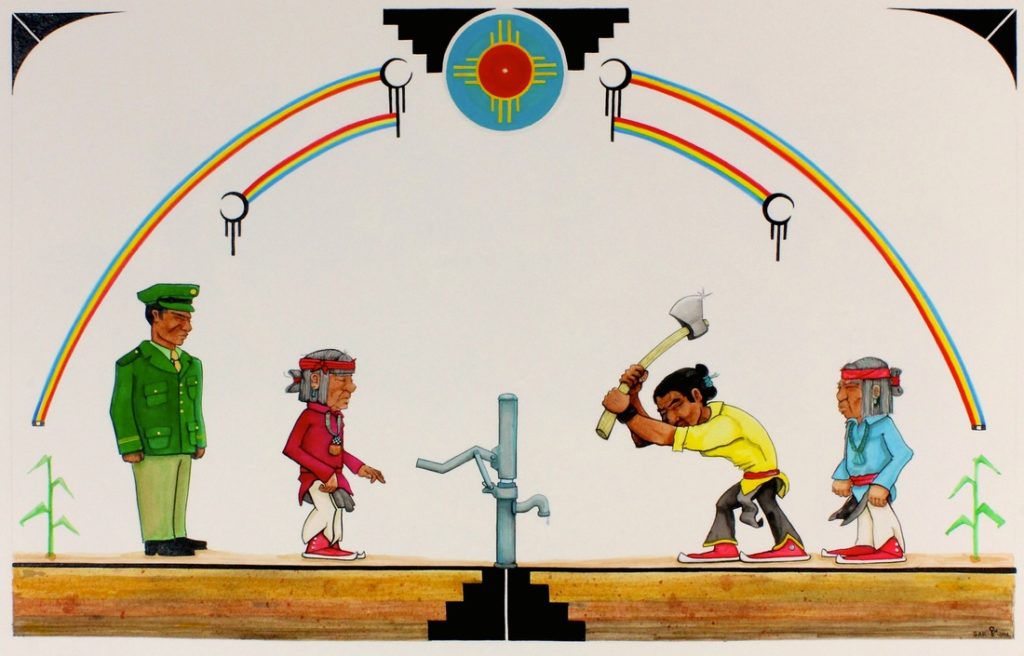
Natay says that a lot of his earlier work was based on identity – not really knowing how to fit or how to name or how to live with the naming of things. Now, he says, he is focused on listening to the outside from within.
“I’m really into meditation and biomechanics right now as a way of me learning other therapies and how to be pain-free, how to be stress-free, how to be connected, how to connect with others and be open and aware,” he says. “I think that’s more important than anything I can really paint or sculpt. So often when people approach me they ask, ‘What were you thinking about? What’s your inspiration?’ But really I’m trying to inspire you.”
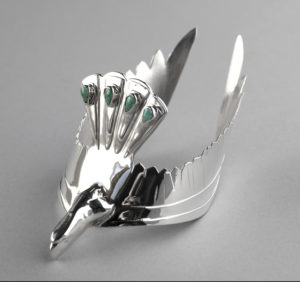 He still does a little bit of everything, from his music and movement to his sculpting and smithing. “I pretty much will do anything to not have a real job,” he jokes.
He still does a little bit of everything, from his music and movement to his sculpting and smithing. “I pretty much will do anything to not have a real job,” he jokes.
For his next evolution as an artist and creator, he wants to get more into a curatorial and organizational leadership role. He is currently developing a new kind of formula for artist panels that allow for more conversation between the community and the artist about the artist’s work, getting away from the more formalized structure of artist panels in which the artist submits a statement and CV to an organization and everything is orchestrated in a very institutionalized kind of way.
“I don’t sit there and try to think of ideas, I just listen to what needs to be out there in the world,” he says. “I feel like the more I listen, the less I feel needs to be out there in a tangible form. I feel like the more I am a vessel of my own creation, the closer I am to really embodying that. When you start putting all these concepts into what you’re creating, it’s so much more than, ‘This is my painting in a frame, this is my sculpture on a podium.’ You’re actually a living, breathing creation. That’s what it’s all about for me.”

(1) How do you like to collaborate?
I like to product manage. I feel like I have a gift of bringing people together, so more than anything, more than sharing my perspective and my angle, I like to organize other people through their passions. What do you really feel passionate about and how can I create that space for you to do something you really like do? That’s’ my favorite way of collaborating.
(2) How do you a start a project?
I start them in my head. I’ll put a brush stroke in my mind. I’ll create a foundation and think of the five problems I could possibly run into in doing that – I’m a planner in the way I’m constantly working on something from within before it comes out. That’s mostly how I work and how I start pieces – I think on it.
(3) How do you talk about your value?
Because I don’t feel like I’m “special” in the way I think about myself, I really feel like I’m blessed with ability. I’m able. I don’t have a disease, I don’t have a dire situation, so I’m able. My parents taught me the value of working hard so I’m a hard worker. Anything I put my mind to, I’m available to offer that ability – I know how to work hard. The thing that I’ve worked the hardest and spent the most hours on learning was how to play drums. I know that I have an acquired technical ability that other people haven’t. I’ve spent more than 10,000 hours to mastery. Because of that my value isn’t just music; my value is rhythm. When you really look at what rhythm is, and even the etymology of word – it is derived from Sanskrit and the base word also means birth, earth, all these concepts of spirituality – this music, the drumming, the rhythm has aligned me with the outside world, feeling where the energy is and where the tension is. It’s all a rhythmic capacity. I’m able to understand that and that’s the value I bring to my work.
(4) How do you define success?
I feel like whatever I’m doing, as long as I’m a little bit more awake than the day before, then the day was a success…and I mean consciously waking up. As long as I’m a little bit more awake and aware of what really matters, then it’s a success. Now that I feel like I’m a little more answered in my seeking of who I am, I can consciously wake up every single day.
(5) How do you fund your work?
I’ll play drums for Bboys at the farmers market and make quick cash there. I’ll write a grant for a project. I’ll sing a song at somebody’s funeral. I’ll teach something. The money thing isn’t my focus; it’s just kind of something I need to do. I haven’t had a job since 2008; I just decided that I don’t want to work for anybody but myself.
All photos courtesy of Ehren Kee Natay.
